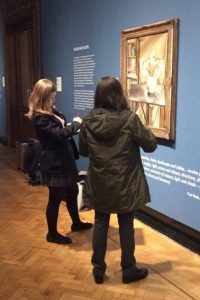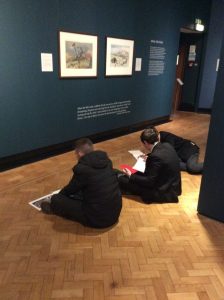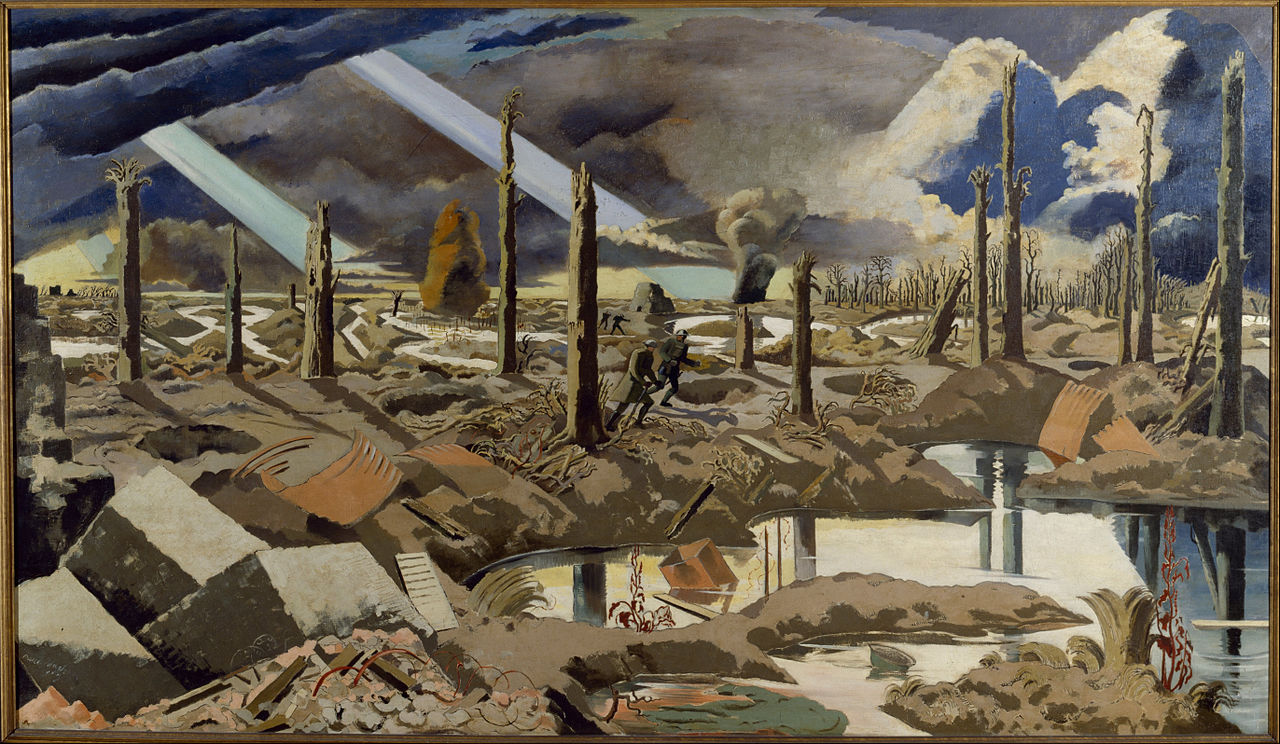By Leah Reed-Evans, Year 10
On Wednesday 10th January 2018, Mrs Pisarević’s Year 10 art class visited the Paul Nash Exhibition in the Laing Art Gallery as part of a GCSE work course.
Paul Nash (1889 – 1946) was a surrealist painter and war artist. His art forged an important new connection between surreal and mystical ideas. Before his art career began, Nash was mentored by William Blake – this clearly had an impact on Nash’s art style.
Nash originally gained recognition during the 1910’s when painting landscapes of World War One battle grounds. For example, Menin Road – an oil painting – completed in 1919, displays a turbulent scene in which soldiers are fleeing bombs dropped at the battle front. In my opinion, the trees are of great significance here because they are bare and feel fear-stricken, providing a true definition of war. Even though the front line was ravaged terrain, nature was still present and was not defeated – this could link to Nash’s ideas about trees being a sign of regrowth. They might also represent each man and the death found in war.
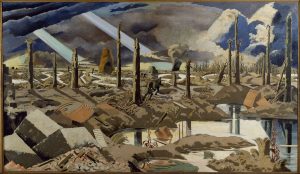
Nash continued this series of war art from memories of the war. He continued to create surrealist pieces that extended through much of his career in the 1930’s. Unlike Menin Road, one of Nash’s works: Still Life with Bog Cotton, created in 1927, depicts dream-like and geometric qualities. It is said that Nash used this style of art to distract him from the traumatising memories of war.
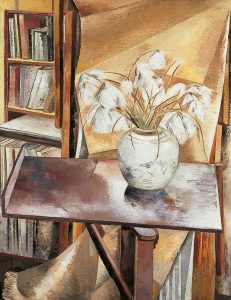
In the 1940’s, Nash continued to create more ‘mythological’ pieces such as Eclipse of the sunflower, 1945 which is rather surreal landscape. Nash also explored the idea of the soul through air borne flowers. In an essay on Aerial Flowers, 1945 he stated, “Death, I believe, is the only solution to this problem of how to be able to fly.”
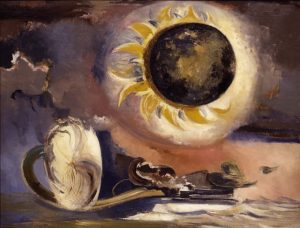
At the exhibition, I worked in my sketch book to redraw one of Nash’s iconic paintings showing the Battle of Britain, 1941. It has a focus on the dog fights, high in the skies and it captures the movement and velocity with which the planes are attacking each other. I think Paul Nash’s work is still iconic today and has influenced Modernism and British Art.
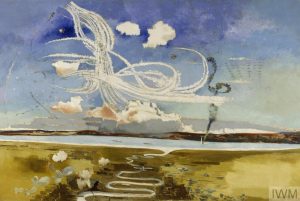
I really enjoyed seeing the original work at the exhibition and finding out more about the artist style and approaches. I will be developing a link to his work in my new GCSE project and hope to build upon my starting points over the next term.
